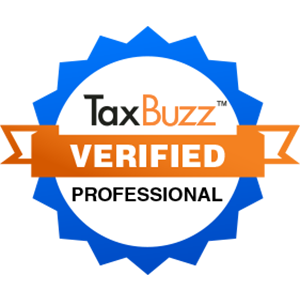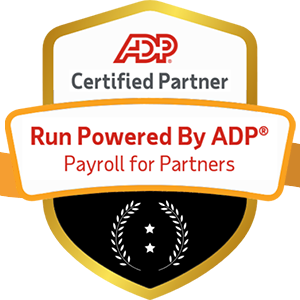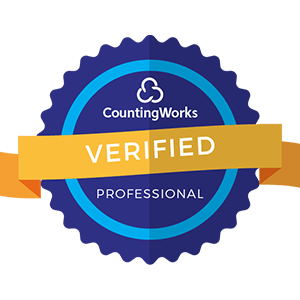
Workforce planning has become a strategic imperative for organizations in the 21st century. With trends like automation, AI, the multigenerational workforce, and the shift to remote work models disrupting traditional talent management, companies must take a proactive approach to ensure they have the right talent to execute business goals now and into the future.
This article will analyze the critical connections between strategic workforce planning and achieving organizational objectives. We will cover:
Strategic workforce planning enables organizations to assess their current and future talent needs to achieve business goals. It is a proactive approach to ensuring the appropriate human capital is ready rather than taking a reactive stance after gaps appear.
Some critical connections between strategic workforce planning and achieving business objectives include:
Business outcome focus: The workforce plan should directly map talent capabilities toward achieving specific business goals within the strategic plan. Rather than be a stand-alone HR process, there must be integration and consultation with business leaders.
Talent readiness: The workforce strategy allows leaders to proactively assess gaps in skills or roles needed for initiatives in the pipeline over short and long-term horizons. HR can develop those capabilities through reskilling staff or acquiring new talent.
Change management: Periods of organizational transformation require ensuring staff impacted by changes like automation have clear transition plans. Strategic workforce planning forecasts impacts and timelines needed.
Risk mitigation: By analyzing metrics like employee engagement or turnover levels, risk areas to executing business objectives due to workforce issues can be assessed and mitigated.
When the workforce and business strategies align, organizations reap benefits, including carrying out strategic objectives seamlessly, retaining and engaging top talent, and gaining competitive advantages through people.

One of the most pivotal trends for strategic workforce planning leaders to analyze is the growth in artificial intelligence and automation and its impact on jobs.
While technological shifts can bring immense productivity and innovation benefits to organizations, they almost always disrupt the status quo in the process. Unfortunately, many businesses view automation and staff members as opposing forces competing against each other in a zero-sum game.
Effective strategic planning should take a different view of symbiotic relationships rather than opposing forces.
The goal of leaders should be augmenting human talent with intelligent automation to create more rewarding jobs and better business performance. Planning for impacts on skills and roles is vital.
A common mistake made when determining automation’s workforce impact is to look at it on an entire job level. Jobs are made up of hundreds of granular activities.
According to McKinsey research on 800 occupations, just 5 percent of jobs can be fully automated using AI capabilities. However, about 60 percent of occupations have at least 30 percent automatable activities.
This means most jobs will not disappear but will likely change as some duties are handed over to algorithms or robots. Strategic planning involves constantly updating skills forecasts as automation evolves, too. What might not be technically feasible today could be in a few years.
As routine and repetitive tasks get automated, innovative leaders shift workforce priorities to value-add activities only humans can handle—like complex problem-solving, innovation, relationship building, creativity, and design thinking.
These value-added activities often fuel business growth and strategic objectives when workers are freed from repetitive tasks.
Walmart provides an example of augmentation and value-added focus with an AI tool suggesting the most efficient shelf-stocking methods for employees. This boosted productivity, allowing staff to switch their freed-up time to customer service activities to drive sales and loyalty.
The workforce plan should map out how automation will augment human work and how to develop essential skills for the jobs of tomorrow. Those who only react day-to-day will be disrupted; leaders who plan ahead of disruption waves reap the rewards.

Age diversity is accelerating as Baby Boomers delay retirement, and Gen Z joins Millennials, representing over 50% of workforce entrants. While technology has often been generationally divisive in workplaces, strategic leaders can shift that mindset. With the proper management, having a multigenerational workforce can yield immense innovation and productivity dividends.
Here are some best practices to manage a cross-generational team:
Bust generational stereotypes: Each generation has general traits, but individuals vary greatly. Avoid pigeonholing staff by demographic backgrounds. Get to know employees personally.
Facilitate cross-generational mentoring: Experienced Boomers and Gen X can share their career knowledge and institutional wisdom with emerging Millennial and Gen Z leaders. Junior employees can reciprocate by helping senior team members develop digital and tech skills.
Customize people management: Understand motivations and communication styles may differ across generations and tailor your management approaches. Offer flexibility in when and how work gets done.
Embrace flexibility: Provide a blend of on-site and remote work options since desires vary by generation. Measure performance by outcomes, not physical presence.
Continuous learning culture: Build a culture of constantly learning new skills and technologies, rather than only early career. Ensure people managers are providing all employees with relevant upskilling opportunities.
Balance continuity and change: Change is constant, but moving too radically without bringing staff along risks turnover spikes across generations. Workforce planning considers the pace of change acceptance across generations.
Strong generational workforce management makes skills gaps close faster while productivity and innovation rise. HR leaders should regularly survey employee engagement levels across all demographic groups to forecast and address issues proactively.

All workforce strategy today needs to view rapid change as a constant. As seen with trends like automation and remote work, external disruption forces will continuously shape organizational transformations.
Strategic leaders, accordingly, must get out ahead of change waves rather than being caught reacting. This foresight is enabled by workforce planning and models informing when in-demand skills will shift. For example, data and analytics capabilities grew hugely in just the past five years.
With change timelines known, proactive mitigation of transitional impacts on staff becomes a priority—like managing those displaced from automated tasks. Facilitating smooth change management drives:
Employee experience: No one likes unexpected overnight shocks to their job duties or requirements. Workforce planning considers sentiment across impacted employees or those at higher risk of automation.
Retention risk: Nothing accelerates resignations faster than roles suddenly seeming obsolete. Strategic planning identifies redeployment opportunities.
Skills development: With forecasting of automation absorptions, competency gaps are spotted earlier and closed through development programs.
HR bandwidth: Sudden large-scale business changes instantly overload HR teams if they are unprepared. Strategic plans staff HR to required levels ahead of peaks.
Senior leadership vision: The C-suite often underestimates or neglects change impacts on human capital when undergoing technology or process transformations. Workforce planning opens their eyes sooner.
No workforce strategy today would be complete without focusing on skillfully enabling organizational change when disruption waves hit.
The bottom line is that strategic workforce planning has become crucial to building resilient yet agile organizations that seamlessly execute dynamic business goals.
With constant external disruption forces like automation and internal shifts from trends like remote work, leaders can no longer afford reactive modes. They must forecast talent needs and skill shifts ahead of the curve.
Aligning business objectives, automation absorptions, and people management across generations enables competitive advantages.
On the other side, those who neglect the people's impact of coveted innovations risk a decline. It’s no longer debatable—workforce planning must be a C-Suite priority and tightly integrated with the direction of the business.
Hopefully, this article provided insights to help assess your organization’s readiness on this front! Some next steps for consideration:


